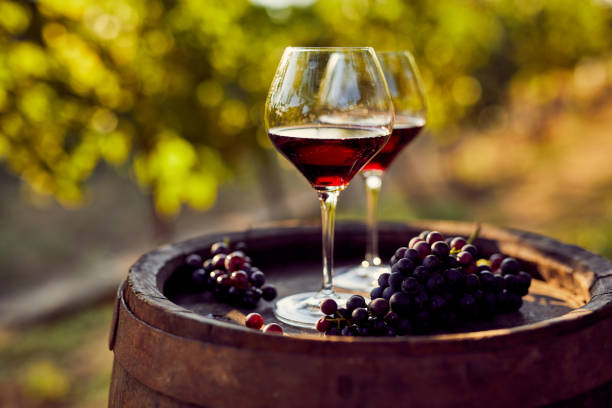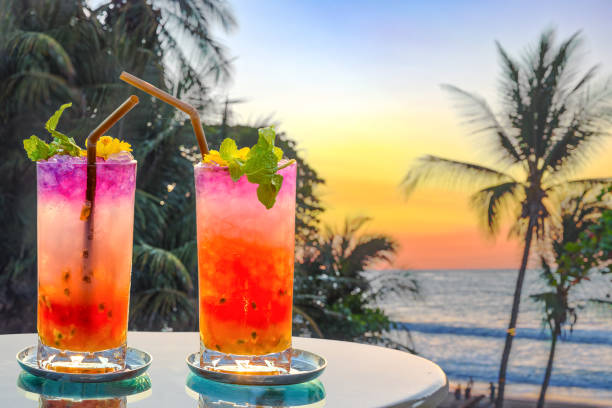The tropics, with their lush landscapes, vibrant cultures, and diverse ecosystems, have gifted the world with a treasure trove of exotic flavors that titillate the taste buds and transport us to sun-kissed paradises. From the sweet succulence of tropical fruits to the rich and aromatic spices, a culinary journey through the tropics promises a symphony of tastes and textures that captivate the senses. In this exploration of “A Taste of the Tropics,” we delve into the unique and enchanting flavors that define tropical cuisine.
Tropical Fruits: Nature’s Sweet Bounty
One cannot embark on a culinary journey through the tropics without indulging in the exotic fruits that thrive in these regions. The tropics boast a staggering variety of fruits, each a burst of flavor and color. Mangoes, with their juicy flesh and sweet perfume, are a tropical icon enjoyed around the world. Pineapples, with their blend of tartness and sweetness, evoke the sun-drenched landscapes where they grow. The papaya, with its buttery texture and melon-like flavor, adds a tropical twist to any dish.
Bananas, ubiquitous in tropical climates, come in a myriad of varieties, from the small and sweet baby bananas to the starchy plantains used in savory dishes. Coconuts, with their versatile contributions of coconut water, milk, and shredded flesh, provide a foundation for countless tropical recipes. These fruits, and many others like guava, passion fruit, and dragon fruit, bring a taste of the tropics to our tables, creating a culinary experience that is both refreshing and indulgent.
Spices and Aromatics: The Heartbeat of Tropical Cuisine
The spices and aromatics of the tropics form the backbone of their distinctive cuisine. From the fiery heat of chili peppers to the warm embrace of cinnamon and the citrusy brightness of lemongrass, tropical spices add depth and complexity to dishes. One cannot discuss tropical cuisine without mentioning the fiery scotch bonnet peppers that infuse Caribbean dishes with their intense heat and fruity undertones.
The spice trade has played a pivotal role in shaping tropical cuisines, with flavors from Asia, Africa, and the Middle East blending seamlessly to create unique and harmonious profiles. Curry leaves, cardamom, turmeric, and ginger are just a few examples of the spices that lend their aromatic magic to tropical dishes. The result is a culinary landscape that dances with bold and tantalizing flavors, capturing the essence of the tropics.
Seafood Extravaganza: Coastal Delights
Tropical regions are often blessed with extensive coastlines, providing access to an abundance of fresh and flavorful seafood. Coastal communities have crafted culinary traditions that celebrate the ocean’s bounty in a myriad of ways. From ceviche in Latin America to Thai seafood curries and the grilled delights of Southeast Asia, tropical seafood dishes showcase the diversity and creativity of coastal cuisines.
In the tropics, one can savor the delicate sweetness of prawns, the succulence of lobster, and the tender flakiness of fish prepared in a multitude of styles. Coconut milk-based curries, lime-infused ceviches, and grilled seafood seasoned with a medley of spices are just a glimpse into the delectable world of tropical seafood. These dishes not only pay homage to the culinary heritage of coastal communities but also provide a sensory experience that transports diners to the shores where these delicacies are savored.
Street Food Wonders: The Soul of Tropical Gastronomy
No exploration of tropical cuisine is complete without delving into the vibrant world of street food. Street vendors in tropical regions offer a tantalizing array of quick bites and flavorful treats that reflect the local culture and culinary traditions. Whether it’s Jamaican jerk chicken, Thai street noodles, or Brazilian acarajé, street food in the tropics is a celebration of bold flavors and communal dining.
The use of tropical ingredients, combined with expert culinary techniques, results in dishes that are both accessible and deeply satisfying. The lively atmosphere of bustling markets and the aromas wafting from street-side stalls create an immersive experience that connects locals and visitors alike with the heart and soul of tropical gastronomy.
Culinary Influences: A Fusion of Cultures
Tropical cuisine is a testament to the rich tapestry of cultures that have converged in these regions over centuries. The blending of indigenous ingredients with those introduced by explorers, colonizers, and traders has given rise to a fusion of flavors that defines tropical gastronomy.
In the Caribbean, African, European, and indigenous influences merge to create dishes like jerk chicken and callaloo. Similarly, Southeast Asian cuisine is a harmonious blend of Chinese, Indian, Malay, and indigenous flavors, resulting in dishes such as pad Thai and rendang. The exchange of culinary traditions has not only enriched tropical cuisine but has also fostered a sense of cultural unity and diversity.
Conclusion: A Culinary Odyssey Through the Tropics
A taste of the tropics is more than a gastronomic experience; it’s a journey into the heart of vibrant cultures, diverse ecosystems, and centuries-old culinary traditions. From the sweet embrace of tropical fruits to the bold and aromatic spices that define the cuisine, each bite is a celebration of the sun-soaked landscapes and rich cultural tapestry of the tropics. Whether enjoyed on a bustling street corner, in a seaside restaurant, or in the comfort of one’s home, the flavors of the tropics offer a sensory adventure that lingers long after the last bite. So, embark on a culinary odyssey through the tropics and let the exotic tastes transport you to a world of indulgence and delight.




